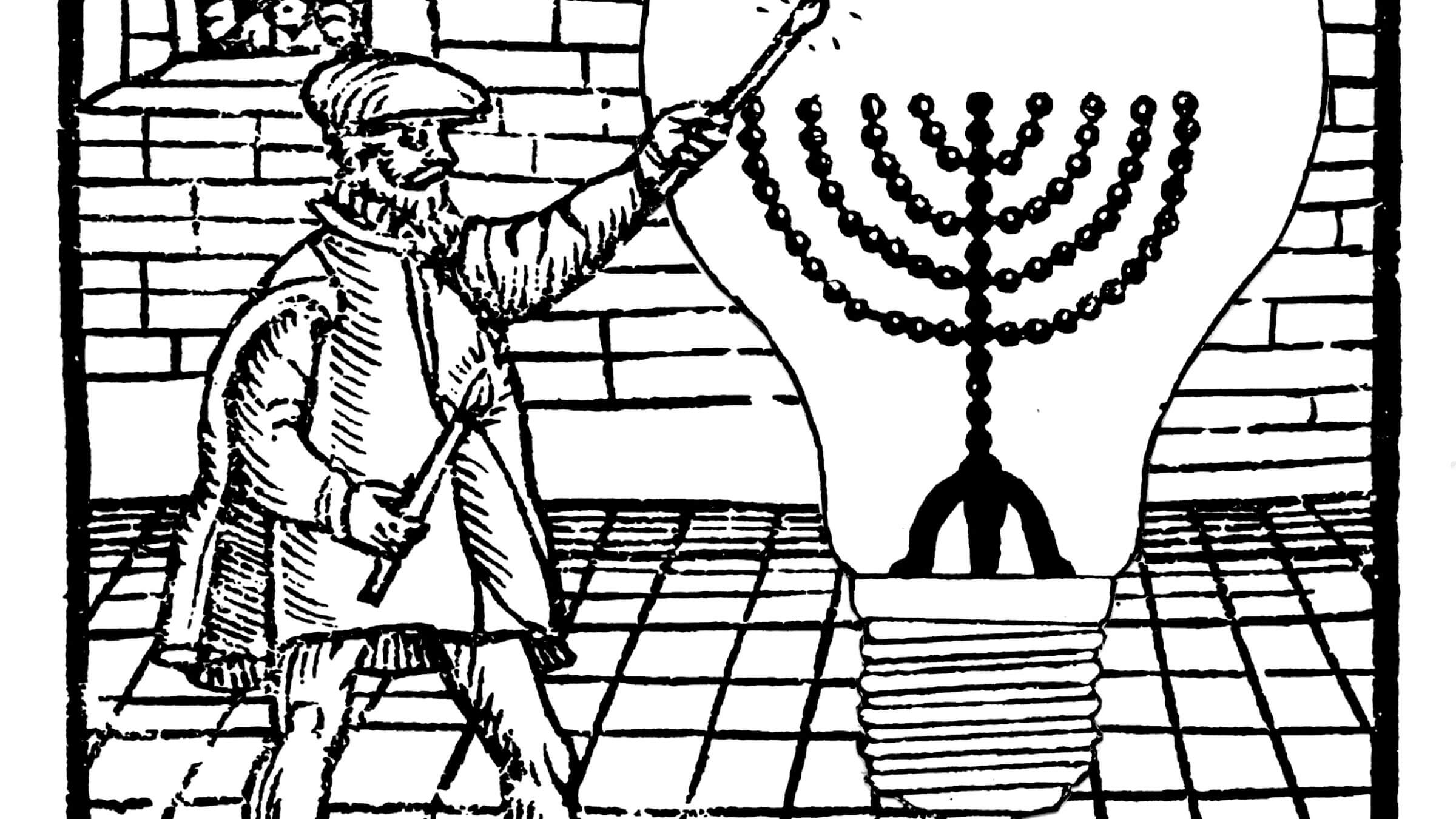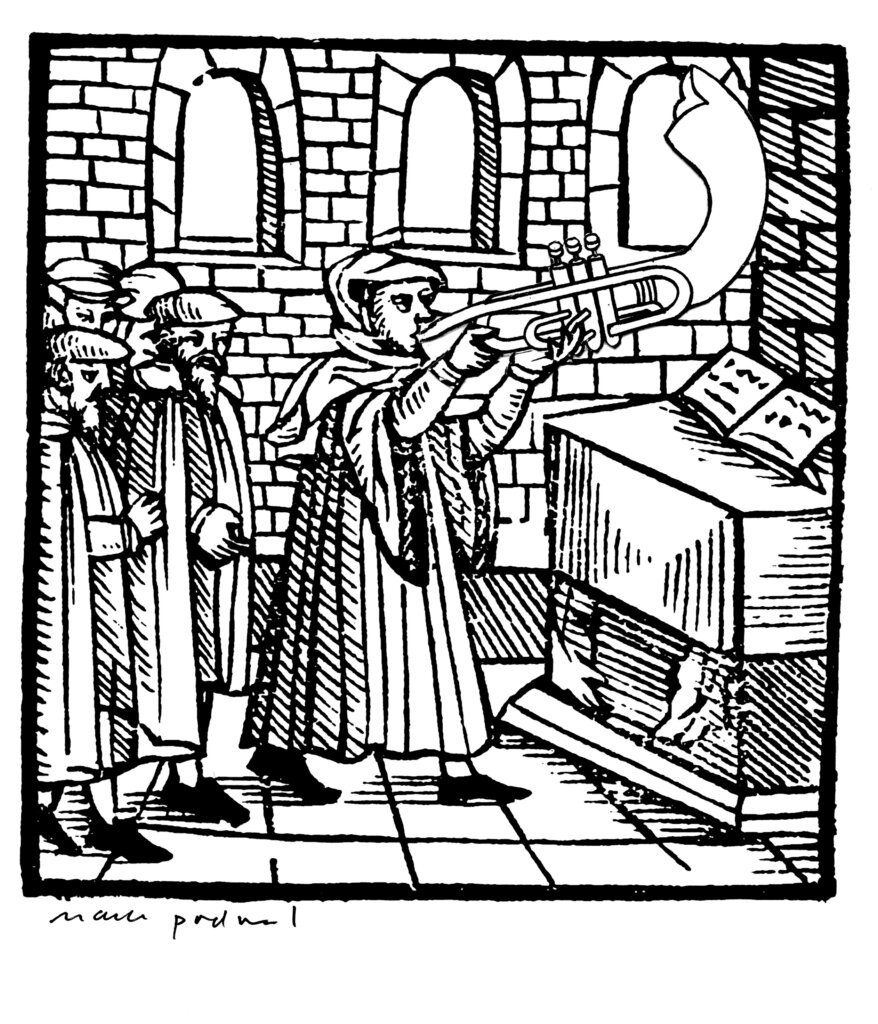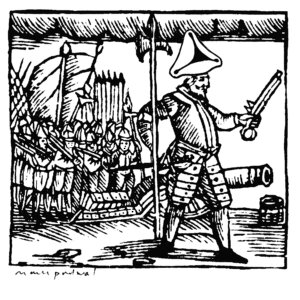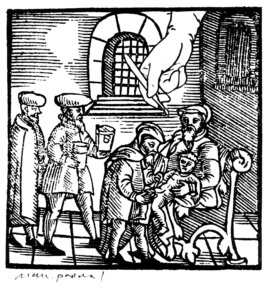Why’s a microwave baking matzo? And why does that 400-year-old menorah have a lightbulb?
Artist Mark Podwal’s woodcuts bring a fresh take on 16th century images to Eldridge Street

Podwal adds a lightbulb to the menorah lighting, an update to the original 16th century woodcut. Courtesy of Museum at Eldridge Street
The Sefer Minhagim, or Book of Customs, dates back to the 14th or 15th century with the aim of teaching Jews, whose communities were decimated by plague and pogrom, about their own observance.
Over centuries, the text became its own tradition, traveling from Austria to Venice, where it was translated from Hebrew to Yiddish, and paired with woodcuts illustrating Jewish ritual. Today you can still see the woodcuts on greeting cards, and, if you travel to Eldridge Street, updated with lightbulbs, hair dryers and hamantashen hats.
In A Collage of Customs: Iconic Jewish Woodcuts Revised for the Twenty-First Century, running at the Museum at Eldridge Street now through Nov. 19, artist Mark Podwal adapted 26 woodcuts from the 1593 illustrated edition of the Book of Customs, tweaking the images for a modern audience.

While the original woodcuts showed scenes of baking matzo and kashering for Passover, imagined some Jews of antiquity in contemporary medieval dress, and Dutch editions altered the backgrounds of images to better reflect their locale, Podwal has graduated the iconography to a modern minhag informed by midrash (and a little MAD magazine).

Into the matzo-baking scene, Podwal pasted in an image of a microwave, a nod to the haste of fleeing Egypt and the need to complete matzo-baking within 18 minutes to it to be kosher for Pesach. Elsewhere, he elucidates deeper tradition: On Sukkot, a harvester now juggles etrogs, alluding to the Torah’s commandment to be happy during the festival and the intricate rabbinical instructions for blessing the fruit. An image of the Amalakite king Agag, the foe of Israel remembered on Shabbat Zachor, now has hamantash headwear, connecting him to his descendant Haman and explaining why he’s remembered before Purim.
“I look at these as educational experiences,” said Podwall, 77, who came to the opening in a blue button down and blazer with a small green rosette in the lapel, an honor from the French Ministry of Culture. “There’s so much information and the response will be ‘I didn’t know that, I didn’t know that.’ Much of what’s in the text people don’t know. There’s much in it that I didn’t know.”
Podwal, who is also a dermatologist, is unique among artists for producing art books with lengthy citations. Alongside his collaborations with writers Elie Wiesel and Francine Prose, Podwal’s A Jewish Bestiary and Kaddish for Dąbrowa Białostocka, are also works of scholarship. The art often synthesizes many layers of Jewish tradition into a single picture, but explains it with accompanying text. (A companion book to the exhibit gets into more detail than the museum labels.)

The collages, whose originals belong to the Bibliotheca Rosenthaliana in Amsterdam, depart somewhat from his typical visual approach, and not just because much of the original art was done by unknown, likely gentile, medieval artisans.
While known in recent decades for his use of color, following 25 years of working in black and white on The New York Times op-ed page, Podwal wasn’t tempted to change the original palette of the woodcuts, which are a rare work of collage. Even when adding a modern flourish, like a microwave or a lightbulb, he was careful to collage something that appeared to blend in. It is a form of continuity for a text first designed to help medieval Jews navigate life in the diaspora with an eye toward tradition.
But there’s a less lofty logic to these updates as well.
“When an idea comes and I chuckle, that’s the right idea,” said Podwal. “I’m a very tough critic — it’s gotta make me chuckle.”
















